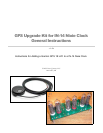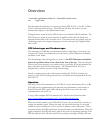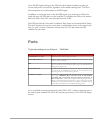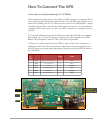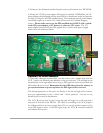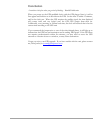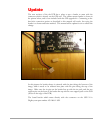
Overview
A man with a watch knows what time it is. A man with two watches is never
sure. - Segal's Law
This document describes how to connect a Garmin GPS 18 LVC to the IN-14 Nixie
Tube Clock from tubeclock.com. The GPS unit will allow the clock to set and
maintain time display to sub-millisecond accuracy.
Timing accuracy comes from the GPS receiver in the Garmin GPS 18 hardware. The
GPS 18 receives signals from the network of satellites which orbit the Earth and
transmit accurate time codes via radio waves. These time codes are typically used for
calculating position for navigational purposes, but they also provide a highly reliable
time source.
GPS Advantages and Disadvantages
The advantages of GPS time synchronization include a high degree of accuracy over
long periods of time (it is referenced to atomic clocks), and it's ubiquitous availability
anywhere on the Earth.
The disadvantage is that the signal is very weak, so the GPS 18 hardware should be
placed in a position where it has a line of site view of the sky. The unit will work
indoors, but at least placing it on a window sill is a good idea. Even thin material, like
paper, will effect the receiver's performance. The Garmin GPS 18 LVC has a
magnetic base, and also a screw to help with mounting.
Search on amazon.com or the web for part numbers 010-10541-00 (suction cup
mount) or 010-10453-00 (flange mount) if you would like mounting hardware for the
GPS 18 LVC.
Operation
The Nixie Clock will communicate to the GPS-18 via two mechanisms: first is an RS-
232 serial port for communicating the time and setup information; and second is a
Pulse Per Second (PPS) signal which will keep the clock in sync when the serial
communications are not in use.
A copy of the complete GPS-18 manual can be found on the Garmin website:
http://www.garmin.com/manuals/425_TechnicalSpecification.pdf
When the clock is turned on, the GPS will take from a few seconds to five minutes to
acquire the satellites' signal. During this time, the clock will run using it's on-board
oscillator, and you will need to set it to within 15 minutes of the correct time. This is
necessary because the GPS system does not provide time zone information. When the
signal is acquired, the GPS will send a signal to the clock (by beginning strobing of the
PPS line) and the clock will then read the next serial port message and adjust the time.



